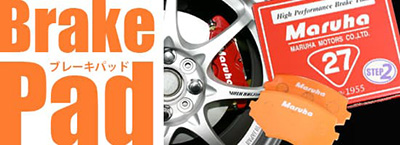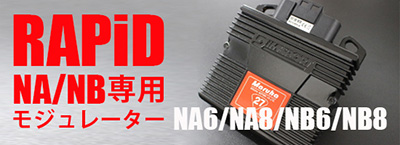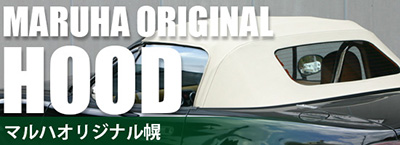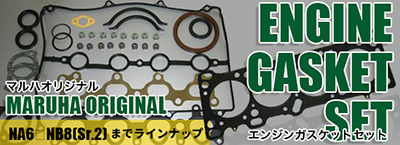Genuine connecting rod for Mazda Miata/MX-5
The possibility of re-usage
Many of the users who request O/H have a mileage of over 100000km on their cars. But what does this mileage mean? Well, we can say that the user has travelled to many places, that's why the car got "tired" and for this reason the user wants to refresh it.
Now, first we have to take a look at the piston and the metal. We can confirm that there are scratches and rust, so an exchange is indispensable. The next item, we have to check is the connecting rod. If we take a look at it we cannot confirm any abnormalities on it, which means that we could start hesitating over its exchange. Many users might think that because until now the engine worked without any troubles, it is not necessary to make any changes.
Toyota's manual
Toyota's 4AG's exhaust (1.6L)DOHC can be opposed to the Miata/Mx-5 engine.
Let's take a look at the Toyota manual here:
1. Check the number engraved on the crankshaft (it represents the journal pin's outer diameter)
2. Check the number on the connecting rod's side (it represents the inner diameter of the big end)
In other words, even without measuring the crank journal pin's outer diameter and the connecting rod's big end's inner diameter we can get to know the measures from these numbers.
By managing all these parts correctly we can ensure an optimal metal clearance.
However,don't think that thanks to the engraving you don't have to carry out any measurements. In every way, it is necessary to carry out proper measurement.
When we disassemble a used engine, we cannot trust only the engraved number and have to check the measures once again by ourselves. As we thought, there are some places that don't respond to the engraved numbers. We can explain it by long-term rust and by the change of shape.
Mazda's manual
Mazda's metal comes only in one size. We can say that if both the crank and the rod are very accurate end products, one metal size can respond to all needs.
In other words, everything depends on the maker-how high are the clearance allowance limits set.
In Mazda's manual we can find the allowance value for the crank journal but there is no information about the rod's big end's inner diameter. For this reason we might ask ourselves if it is O.K. not to measure it.
Even if the standard value is not printed in the manual we can measure the 4 rods' inner diameter and by this we can verify the differences.
If all four match, we don't have to worry but if there is some difference in between them, we should exchange them.
This measurement should be carried out when assembling the engine.
Now let's take a look at a Miata/Mx-5 (mileage over 100,000km) rod inner diameter.We might suspect that the inner diameter's accuracy is not as good as before. If it is in the boundaries of the allowance level, there is no problem.
The change of the big end's inner diameter
We can think of many reasons that changed the hard metal big end's shape. One of the reasons might be the piston's movement that applies a lot of stress to the rod. For this reason the rod's big end's inner diameter might get distorted or the rod might bend.
Another reason might be the rough surface caused by the fretting corrosion.
Long-term usage might cause small cracks on the rod's inner wall. Oil might enter into these cracks.
Furthermore, because of the vibration electrolysis might occur and the metal surface might be damaged.
These are all those reasons that might affect the internal diameter value.

Metal fatigue
Except the inner diameter's change of shape and the long-term usage, we have to think about the metal fatigue too.
There are several reasons for metal fatigue.
During the four stroke cycle the most stress is on the rod at the exhaust top dead center.
The stress on the rod in some cases can correspond to a few tons of weight.
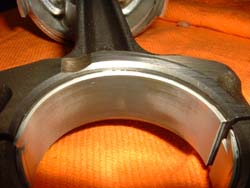
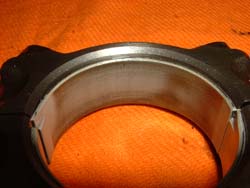
Bent rod
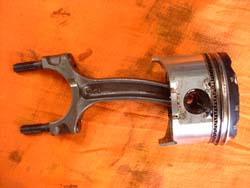
Bending of the rod caused by the water hammer effect.
The engine is completely locked. Reusage is impossible.
The rod we want to introduce here is one that's neck has been bent by the water hammer effect.
The reason for this is the water draining from the intake side. It entered the combustion chamber and for this reason there is not enough space for the piston. But the crankshaft continues its work without any change. Under these circumstances the rod bends. At the end the rod becomes a prop and the engine gets completely locked.
The damaged rod

We can see that the cylinder lock is pierced through.
In this case it is a turbo engine and differently from the usual Miata/Mx-5 the stress on the rod was way bigger.
In this case the rod got damaged and the cylinder block pierced through.
About the bolt
Let's take a look at the bolt.
When we think about the big end's inner diameter's deformation we have to consider the lack of the bolt's strength too.
If there is more stress than the bolt can take, it loses its ability to maintain the perfect circular shape.
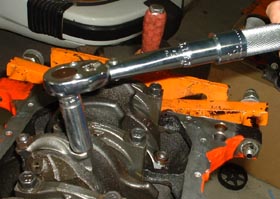
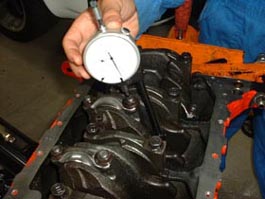
In the genuine setup the rod's bolt cannot be purchased as a single item.
Which means that because of the bolt the rod too has to be exchanged.
Another possibility is to order heavy-duty bolts from race parts makers.
Let's take a look at the bolt's types.
There are 2 types: Miata/Mx-5 rod bolt and the new type-Familia (1800PS sport).
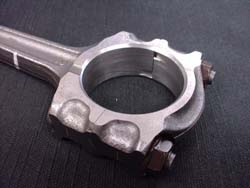
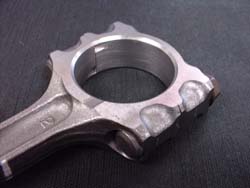
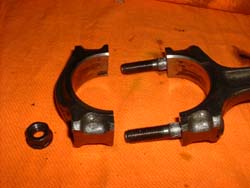
The above rods are Miata/Mx-5 genuine rods. Sealed with bolt and nut.
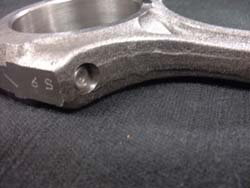
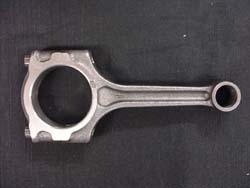

The above rods are genuine rods for Familia. There is a notable improvement.
The first one has been used by Mazda for long years and is a bolt & nut type.
The second one is a forged rod made for racing and the newest high power cars.
At last but not least
As we've already mentioned before,if the conrod has been used for a long time under severe conditions it is not good to consider its reusage at the time of O/H. Maruha recommends to its customers to exchange the rod.
NEW OIL!!

ESTER27 Full Synthetic
NEW TOPICS



CARBON TIMING COVER

